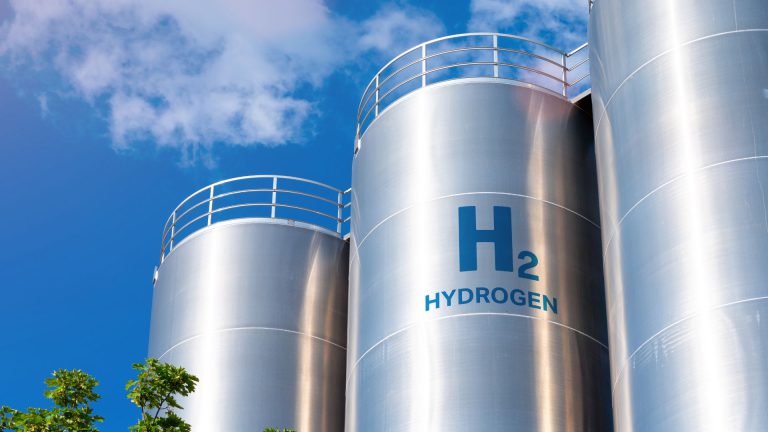The global hydrogen industry finds itself at a critical stage, navigating a confluence of unprecedented geopolitical shifts, volatile economic landscapes, and evolving regulatory frameworks. In this context, the bankability of hydrogen projects has become an even more critical consideration for investors and developers alike. Given the prevailing uncertainties, securing robust financial foundations is paramount.
To explore the key determinants of project bankability, we convened a discussion between Cranmore Partners Executive Director Orhan Tanriverdi and Flexens Finance Manager Tommi Nykänen, respected experts in the energy transition. Cranmore Partners is a distinguished financial advisory company operating globally and specialising in energy transition and infrastructure.
The Necessity of Strong Financial Foundations for Hydrogen Projects
The energy transition is happening, yet the ability to secure investments in the hydrogen value chains remains a central challenge. Investors and financiers are searching for projects with realistic business and investment cases, while considering regulatory environment and political risks.
[Nykänen]: “Hydrogen projects, by their nature, present a complex combination of risks and opportunities. Long-term certainty in offtake agreements, commercial viability and green power sourcing are some of the key elements enabling these infrastructure investments. Without a strong story around these themes, securing funding becomes a key challenge. Investors are increasingly seeking stability and predictable cash flows, which can be achieved through solid project fundamentals and bankable contract structure. Projects with validated fundamentals will be better positioned to attract serious financial backing.”
[Tanriverdi]: “Investors require confidence that a project will generate visible cashflows and risk adjusted returns. The key is to align financial structuring with robust uncertainty management, while ensuring projects are well-positioned from a competitiveness perspective within the evolving energy landscape. In the hydrogen sector, we observe considerable enthusiasm, but enthusiasm alone does not translate to financial viability. A sound project must demonstrate a well-documented approach to risk mitigation, regulatory compliance, and a clear pathway to commercialisation. Without these assurances, lenders and investors will exercise caution.”

Key Considerations for Hydrogen Project Bankability
Operating in the hydrogen project landscape requires constant adaptation, as regulatory environments are currently subject to frequent change, affecting both developers and their counterparts. This regulatory uncertainty naturally leads to heightened scrutiny from financiers. However, the cornerstone of successful hydrogen projects remains, they must be built upon a foundation of robust financial/commercial viability. The following elements are essential for securing investment.
- Long-term agreements with off-takers provide essential revenue certainty – Investors prioritise projects with demonstrated demand.
[N]: “For developers, securing offtake agreements early in the project lifecycle is imperative. These agreements mitigate market risk and enhance investor confidence. A strong offtake portfolio demonstrates a secured market for the hydrogen or derivatives produced, which is a critical factor for financiers. Given the evolving nature of hydrogen markets and offtake structures, developers must proactively engage potential customers and structure agreements that balance flexibility with financial security.”[T]: “Unlike other renewable energy sectors, hydrogen has diverse end-use applications, spanning industrial and mobility sectors. Understanding the specific needs of offtakers and structuring agreements in a way that would ensure that those contracts are not out of market in the long term is a critical success factor. The most bankable projects demonstrate not only clear demand but also a well-established commercial framework that minimises exposure to price volatility and regulatory uncertainty. Investors seek long-term price stability and a diversified approach to offtake, reducing reliance on single buyers or market segments. As such, creating a “mini-market” around a project with offtakers from different geographic markets as well as different use cases, ideally with pent-up demand, significantly enhances the bankability of a green hydrogen project.”
- Hydrogen production, particularly green hydrogen, is dependent on affordable and reliable electricity.
[N]: “Power sourcing strategies must align with cost predictability and sustainability objectives. Whether through direct renewable energy procurement or long-term power purchase agreements (PPA), securing stable energy input is vital. The cost of electricity remains a significant determinant of hydrogen production costs, and fluctuations can significantly impact project economics such as end-product pricing. Therefore, developers must establish long-term, low-cost power supply contracts that guarantee competitive pricing and minimise exposure to market volatility. Without a reliable and cost-effective power supply, even well-planned hydrogen projects will struggle to achieve financial viability.”[T]: “The location of production sites plays a pivotal role in cost efficiency and overall project viability. Proximity to renewable resources and grid infrastructure can provide a competitive advantage. However, logistics and transmission costs must be carefully considered on a case-by-case basis. In that respect, each project is unique due to the key features of its host country as well as its geographic conditions. Developer should carefully assess the merits of transporting green electrons vs. green molecules and optimize the design of their projects accordingly. Projects that are excessively remote or lack adequate grid and/or pipeline access may face additional cost burdens. The key is to balance energy availability with infrastructure readiness, ensuring projects are well-positioned for efficient and profitable operation.”
- A successful hydrogen project is integrated into a broader energy ecosystem, enhancing its resilience and market potential.
[N]: “Hydrogen must be integrated into a well-structured value chain. Investors assess how a project aligns with existing or emerging ecosystems, from production and distribution to end-use applications. A robust value chain facilitates efficient transport and utilisation, reducing operational risks and maximising market potential. Developers must consider integration with sectors such as transport, chemicals, and heavy manufacturing. The more integrated a project is, the more resilient and financially attractive it becomes.”“The ability to integrate into industrial hubs or existing infrastructure enhances a project’s credibility. Collaboration between developers, policymakers, and financiers is essential. Hydrogen projects that align with broader economic and industrial objectives tend to receive greater policy support and financial backing. Investors are increasingly focused on projects that not only demonstrate strong business fundamentals but also contribute to a broader decarbonisation strategy.”
[T]: “It is key to understand every stage of production and distribution, from renewable energy generation (like wind or solar) to conversion into green molecules (e.g., hydrogen or ammonia), delivery to the end user and most importantly the associated value of the molecule to the end user and identify costs associated with each segment, including technology, infrastructure, maintenance, and logistics.”
“We have had the pleasure to work with leading developers and Governments globally and to date supported some of the most advanced large-scale projects in the EMEA region. This has provided us with a vantage point over how to plan for a well-integrated and competitively priced green molecule operation.”
- A well-defined route-to-market strategy is critical for ensuring that hydrogen projects can effectively reach their target customers and achieve commercial success.
[N]: “In the context of hydrogen, route-to-market strategies must be carefully planned, considering the unique characteristics of hydrogen as an energy carrier. This includes evaluating various distribution options, such as pipelines, or shipping, and determining the most cost-effective and logistically feasible approach. The same applies of course to derivatives. Furthermore, understanding the specific needs of different customer segments, from industrial users to transportation fleets, is essential for tailoring effective engagement strategies. A robust route-to-market strategy not only ensures efficient delivery but also enhances customer satisfaction and strengthens long-term commercial relationships.”
[T]: “Investors are increasingly scrutinising the route-to-market strategies of hydrogen projects, recognising their direct impact on revenue generation and profitability. A comprehensive analysis of market demand, competitive landscape, and regulatory environment is crucial for selecting the optimal distribution channels. This analysis should also consider the scalability and the replaceability of the chosen approach, ensuring that it can accommodate future growth and market expansion as well as offer alternative routes to market in case of an unforeseen delay in the original approach. Moreover, establishing strategic partnerships with key stakeholders, such as logistics providers and end-users, can facilitate seamless market access and enhance project bankability. A well-articulated route-to-market strategy demonstrates a clear understanding of the market dynamics and a commitment to delivering value to customers across different segments and geographies.”
The Future of Hydrogen Finance
Hydrogen projects will continue to attract attention, but only those with robust financial underpinnings will succeed. Bankability is contingent on clear revenue models, effective risk mitigation, and strategic ecosystem integration.
[N]: “Hydrogen’s potential is substantial, but success depends on well-structured projects that align financial and technical realities. Developers must proactively address bankability factors to facilitate the investment process. Investors and lenders are eager to support viable projects, but they require evidence of financial discipline and strategic foresight.”
[T]: “Collaboration between investors and developers is crucial. By aligning priorities, we can build a sustainable hydrogen economy that benefits all stakeholders. The future of hydrogen finance depends on transparency, realistic expectations, and a commitment to long-term value creation. Projects that embody these principles will not only be able to secure funding but also set the standard for industry maturation.”
As the hydrogen sector evolves, financial discipline and strategic partnerships will determine which projects progress from concept to reality. Bankability ensures long-term sustainability, it goes beyond funding.
Contact
Tommi Nykänen, Finance Manager at Flexens
tommi.nykanen@flexens.com
Orhan Tanriverdi, Executive Director at Cranmore Partners
orhan.tanrıverdi@cranmorepartners.com
www.cranmorepartners.com










